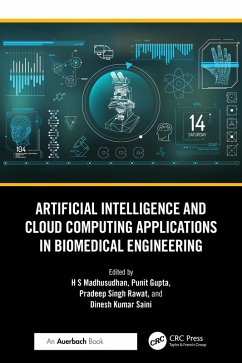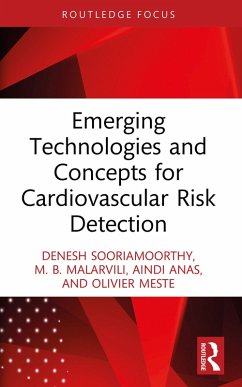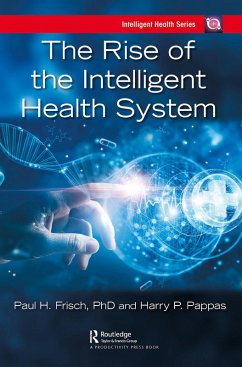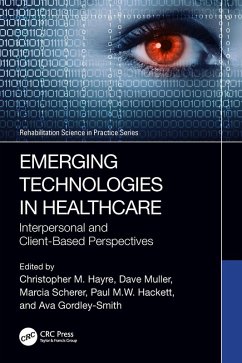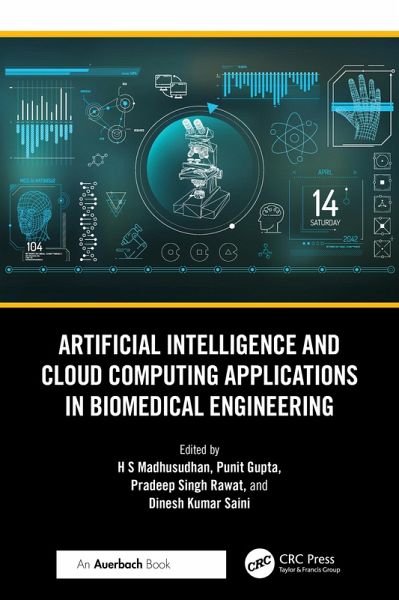
Artificial Intelligence and Cloud Computing Applications in Biomedical Engineering (eBook, PDF)
Versandkostenfrei!
Sofort per Download lieferbar
50,95 €
inkl. MwSt.
Weitere Ausgaben:

PAYBACK Punkte
25 °P sammeln!
Biomedical engineering is undergoing a transformation because of AI, which is allowing creative solutions that enhance patient outcomes, diagnosis, treatment planning, and healthcare delivery. Artificial Intelligence and Cloud Computing Applications in Biomedical Engineering examines the salient characteristics of AI in biomedical engineering, highlighting its practical applications and new directions. Highlights of the book include: Genome sequence and visualization The role of AI and cloud in detection of diseases Nature-inspired algorithms for disease detection Frameworks for disease classi...
Biomedical engineering is undergoing a transformation because of AI, which is allowing creative solutions that enhance patient outcomes, diagnosis, treatment planning, and healthcare delivery. Artificial Intelligence and Cloud Computing Applications in Biomedical Engineering examines the salient characteristics of AI in biomedical engineering, highlighting its practical applications and new directions. Highlights of the book include:
With a focus on designing AI techniques for disease detection, the book explores the role of AI in biomedical engineering. It discusses how machine learning (ML) and deep learning (DL) are at the heart of AI applications in biomedical engineering. ML algorithms, particularly those based on neural networks, enable computers to learn from large datasets, identify patterns, and make predictions or decisions without explicit programming, and implementing ML algorithms is a focus of the book. Another focus is on DL, a subset of ML, and how it uses multi-layered neural networks to achieve high accuracy in such complex tasks as image and speech recognition. Biomedical engineering generates massive amounts of data from medical imaging, genomic sequencing, wearable devices, electronic health records (EHR), and other sources. This book also discusses AI-driven big data analytics, which allows researchers and clinicians to derive from data meaningful insights, aiding in early disease detection, personalized treatment plans, and patient monitoring.
- Genome sequence and visualization
- The role of AI and cloud in detection of diseases
- Nature-inspired algorithms for disease detection
- Frameworks for disease classification
With a focus on designing AI techniques for disease detection, the book explores the role of AI in biomedical engineering. It discusses how machine learning (ML) and deep learning (DL) are at the heart of AI applications in biomedical engineering. ML algorithms, particularly those based on neural networks, enable computers to learn from large datasets, identify patterns, and make predictions or decisions without explicit programming, and implementing ML algorithms is a focus of the book. Another focus is on DL, a subset of ML, and how it uses multi-layered neural networks to achieve high accuracy in such complex tasks as image and speech recognition. Biomedical engineering generates massive amounts of data from medical imaging, genomic sequencing, wearable devices, electronic health records (EHR), and other sources. This book also discusses AI-driven big data analytics, which allows researchers and clinicians to derive from data meaningful insights, aiding in early disease detection, personalized treatment plans, and patient monitoring.
Dieser Download kann aus rechtlichen Gründen nur mit Rechnungsadresse in A, B, BG, CY, CZ, D, DK, EW, E, FIN, F, GR, HR, H, IRL, I, LT, L, LR, M, NL, PL, P, R, S, SLO, SK ausgeliefert werden.




